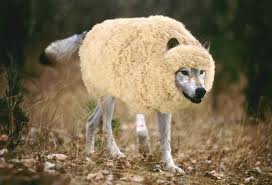by Brad Hawkins
The critical factor for wolf survival in human habitat is
mutual understanding. Fear and hatred
thrive on ignorance and ignorance thrives on isolation. We must be well informed when we make
decisions about wildlife.
Greater Yellowstone Ecosystem in the Northwestern corner of
Wyoming, Eastern Idaho and southern Montana is “the largest remaining
essentially intact ecosystem in the temperate zones of the earth.” The Yellowstone is the longest free flowing
river in the United States. The grey
wolf, Canis lupus, was the dominant predator in this original area.
Of the 18 million acres in the Yellowstone region, only 2.2
million acres inside Yellowstone National Park are off limits to cattle, Bos
Taurus.
Of the 18 million acres in the Yellowstone region, only 2.2 million acres inside Yellowstone National Park are off limits to cattle, Bos taurus.
One of the central struggles with Yellowstone wolf
populations is the battle with ideologies of ranchers and sheepherders and their
understanding of wolf ecology. The wolf,
to some, not only poses a threat to domesticated livestock, but also, threatens
the “cowboy way of life”.
There is always a constant struggle between entrenched ideas
passed down through generations versus scientific data to the contrary
concerning wolves and their relationships to livestock.
Wolves will kill livestock at times, but it is not the way
they are wired ecologically. Wolves that
have been conditioned to certain prey species tend to continue to search out
and depend on those species.
The original wolves in the Yellowstone came from Alberta,
Canada and were mainly predatory on elk.
These wolves would rarely feed on dead elk because meat already dead had
been used to poison other pack members and they had learned not to eat meat
already killed in the past. Yellowstone
wolves have been known to den and rest in the midst of cattle herds and never
bother a single animal.
However, there are wolves that do obtain a taste for domestic animals and would need to be removed from the population. This is not the norm in wolf populations of Yellowstone.
However, there are wolves that do obtain a taste for domestic animals and would need to be removed from the population. This is not the norm in wolf populations of Yellowstone.
Riparian zones, green bands of plant life along creeks etc…
which provide fodder for cattle, are very important to wildlife and plant
species in the Yellowstone area. Many
populations are centered in life around these riparian zones just like fish are
drawn into estuaries.
Varied habitat components make these riparian zones small
sub-ecosystems in their own right.
Cattle herds, left to their own in these zones, cause drastic changes in
vegetation and this leads to bank erosion which in turn affects many aspects of
the ecosystem in terms of fish populations and certain tree populations. Eroded overgrazed land leads to a weed called
leafy spurge that takes over in an area and depreciates the value of the food
chain. We have a similar problem with
weeds such as yellow broomweed in Oklahoma.
These weed species are a warning of over grazing. This in turn causes major losses to consumers
up the food chain. With this being
said, it is important to note that both ranching and wolf reintroduction need
to be done with caution because of the sensitive balances between all parts of
the Greater Yellowstone Ecosystem.
Ranch practices have improved in the Yellowstone area by
fencing cattle out of these riparian zones that are right next to the first 15
feet of bank. This has allowed
protection of the sensitive waterways.
Wolves must be managed also in order to allow for an
ecological balance that provides acceptable options for the wildlife, ranchers,
tourists, and all political forces involved in making such major choices.





No comments:
Post a Comment
We tested you all school year. Now it is your turn to question us. Maybe we will use your question as the subject of a post.